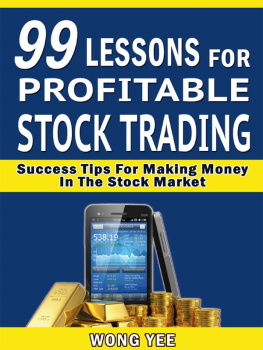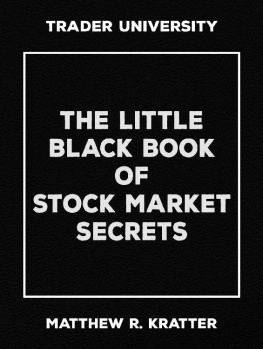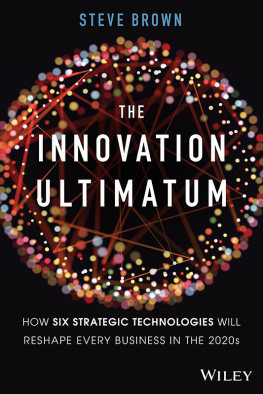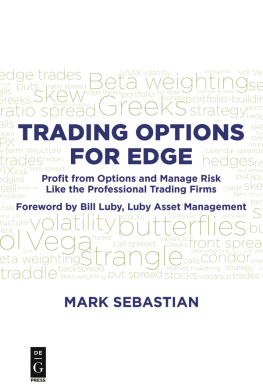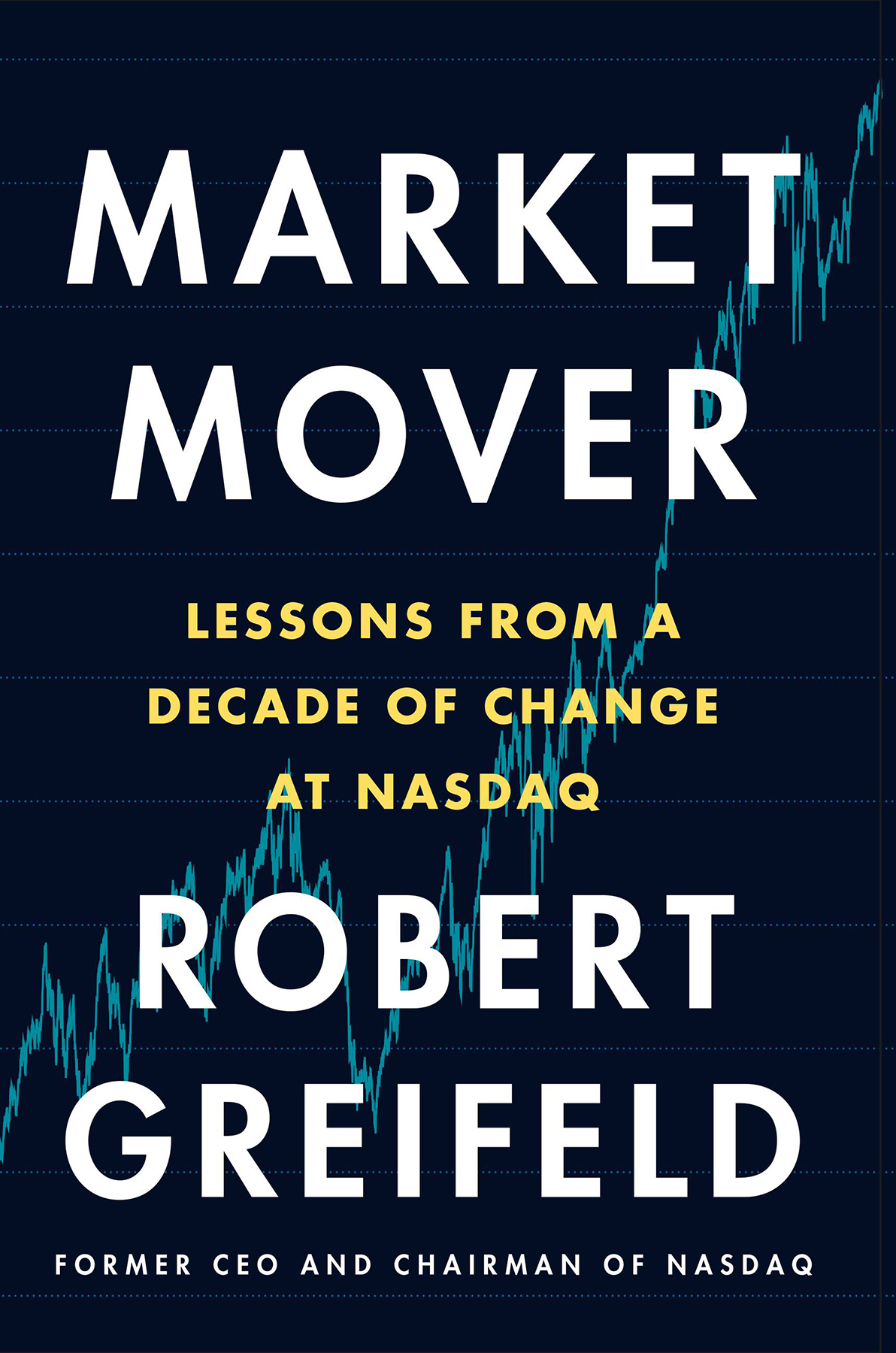Copyright 2019 by Robert Greifeld
Cover design by Karl Spurzem. Cover copyright 2019 by Hachette Book Group, Inc.
Hachette Book Group supports the right to free expression and the value of copyright. The purpose of copyright is to encourage writers and artists to produce the creative works that enrich our culture.
The scanning, uploading, and distribution of this book without permission is a theft of the authors intellectual property. If you would like permission to use material from the book (other than for review purposes), please contact permissions@hbgusa.com. Thank you for your support of the authors rights.
Grand Central Publishing
Hachette Book Group
1290 Avenue of the Americas, New York, NY 10104
grandcentralpublishing.com
twitter.com/grandcentralpub
First Edition: October 2019
Grand Central Publishing is a division of Hachette Book Group, Inc. The Grand Central Publishing name and logo is a trademark of Hachette Book Group, Inc.
The publisher is not responsible for websites (or their content) that are not owned by the publisher.
The Hachette Speakers Bureau provides a wide range of authors for speaking events. To find out more, go to www.hachettespeakersbureau.com or call (866) 376-6591.
Library of Congress Cataloging-in-Publication Data
Names: Greifeld, Robert, author.
Title: Market mover : lessons from a decade of change at Nasdaq / Robert Greifeld.
Description: First edition. | New York : Grand Central Publishing, [2019] | Includes index.
Identifiers: LCCN 2019000524 | ISBN 9781538745137 (hardcover) | ISBN 9781538700983 (ebook) | ISBN 9781478995470 (audio download)
Subjects: LCSH: Nasdaq Stock Market. | Stock exchangesUnited States.
Classification: LCC HG4574.2 .G74 2019 | DDC 332.64/30973dc23
LC record available at https://lccn.loc.gov/2019000524
ISBNs: 978-1-5387-4513-7 (hardcover), 978-1-5387-0098-3 (ebook)
E3-20190711-JV-NF-ORI
For Julia.
She has made everything possible.
Explore book giveaways, sneak peeks, deals, and more.
Tap here to learn more.

Nasdaq Names Greifeld CEO
Wall Street Journal, April 16, 2003
Im six months too late.
Thats the phrase that kept popping into my head as I started my job as CEO at Nasdaq in May 2003. Id been hired to engineer a turnaround at this storied financial institution, which was struggling through perhaps the most precarious period of its three-decade history. It was not a position Id sought out; Id initially been hesitant to even take the interview. I knew enough about Nasdaq and its problems to question whether it was really where I wanted to be. But Im not one to turn away from a challenge. When I got inside, however, I began to wonder if the window of opportunity had already closed.
Earlier that year, I had been happily employed at SunGard Data Systems, a large software and services provider for the financial industry. Prior to that, Id been a software entrepreneur, co-owner of ASC, which had been sold to SunGardthe second largest acquisition they had ever done. I was promoted quickly, becoming an Executive Vice President responsible for a collection of subsidiaries with annual revenue of more than $1 billion and thousands of employees. It was a fast-moving, stimulating field, and I loved my job. Building new technologies is a deeply creative and satisfying activity. In my heart, I have always loved softwareit seems like you have the freedom to create anything. So when the recruiter first called me and told me Nasdaq was seeking a new CEO, I was flattered but hesitant. Did I really want to leave all of this behind for a highly regulated organization that I knew had some serious issues, even one as prestigious as Nasdaq?
Oh, I dont know, thats not really my thing. Im a technology guy, not an exchange guy, I told him. Plus, Nasdaq has so many problems.
That was an understatement. In 2003, Nasdaq was reeling. The dot-com bust had dried up the IPO (initial public offering) market. The tech stars that had lit up the financial firmament only a few years before had lost their lusterand their lofty valuations. The organization was bogged down in transitioning from regulated nonprofit entity to for-profit company. Nasdaq was losing money. The ever-increasing trading volume (and the revenue that goes with it) that had made the platform a favorite of traders during the market expansion of the 1990s was a thing of the past.
Nasdaqs predicament was a classic tale of the disruptor becoming the disrupted. The three-decades-old exchange had once been a technological leap forward: the worlds first virtual stock market. Traditionally, exchanges used the trading floor model. Youve seen it in the moviestraders negotiating, yelling, and gesticulating in the financial worlds equivalent of the mosh pit. There were other venues for trading stocks of small companies, like the telephone-based over-the-counter (OTC) market, but these were insignificant and lightly regulated. Nasdaq only had to use a telephone when they wanted to actually execute a trade.
In the excitement that accompanied the long boom of the nineties, Nasdaq found its stride. There had been a time when all Americas stock markets played second fiddle to the New York Stock Exchange (NYSE). But in the final decade of the twentieth century, Nasdaq had facilitated and nurtured the rise of a new generation of technology companies, firms like Cisco, Microsoft, Dell, Apple, and Intel. Most of these started small, raising money with Nasdaq back when significant venture capital was hard to come by and NYSE wouldnt list such unproven startups. Nasdaq was their only option, and so it became the public-market parent to hundreds of promising children. Not all of them survived, of course, but the ones that did changed the world. And as they grew ever stronger, becoming national and global leaders, their loyalty to Nasdaq persisted. Indeed, as the center of American business began to shift west, away from the industrial factories of the East and Midwest to the sunbaked streets of Silicon Valley, Nasdaq was a primary beneficiary. Its brand became a global signifier of success, technology, and globalization.
In the late nineties, when the boom became a bubble, Nasdaq continued to thrive. In those heady gold-rush days of irrational exuberance, the promise of internet riches inspired thousands of startups to create online business models. All you needed were enough eyeballs, and it seemed that investors were smitten. A few such companies, like Amazon, were successful beyond all expectations and became pillars of the global economy. Many more are now remembered only for their sky-high valuations and disastrous flameoutslike eToys or Pets.com. Nasdaq was at the center of all of itopening the door to a new world of global online trading, stock speculation, and wealth creation that would have been unimaginable a decade earlier. In fact, it would not be unreasonable to claim that there could not have been a dot-com boom at all without Nasdaq. In 1999 alone, the Nasdaq Compositea weighted index of several thousand stocks listed on the exchangeincreased almost 86 percent. But even as its brand reached new heights of prominence, Nasdaq was under threat from a new wave of innovators.
I was one of them. As an entrepreneur in what is now known as the fintech (financial technology) industry, I created one of the early Electronic Communications Networks (ECNs) for ASC. ECNs were computer-based trading systems that not only posted quotes but electronically matched and executed orders. On Nasdaqs system, you could see the bid and the offer right there on the screenclose enough to kiss, as I like to saybut the trade could not be consummated without a middleman. Customers still had to pick up the telephone to complete the deal. Indeed, a Nasdaq trading desk at opening bell was almost as loud as the NYSE floorthe phones ringing constantly, the traders yelling into headsets. ECNs came along and automated the last step, empowering customers with direct access, cheaper costs, and greater speed. The future was here and it was digital. And while it might not have been evenly distributed yet (to borrow a phrase from author William Gibson), it was coming soon to a stock exchange near you. Little by little, ECNs were gaining influence and market share, in a market that was exploding with activity.


